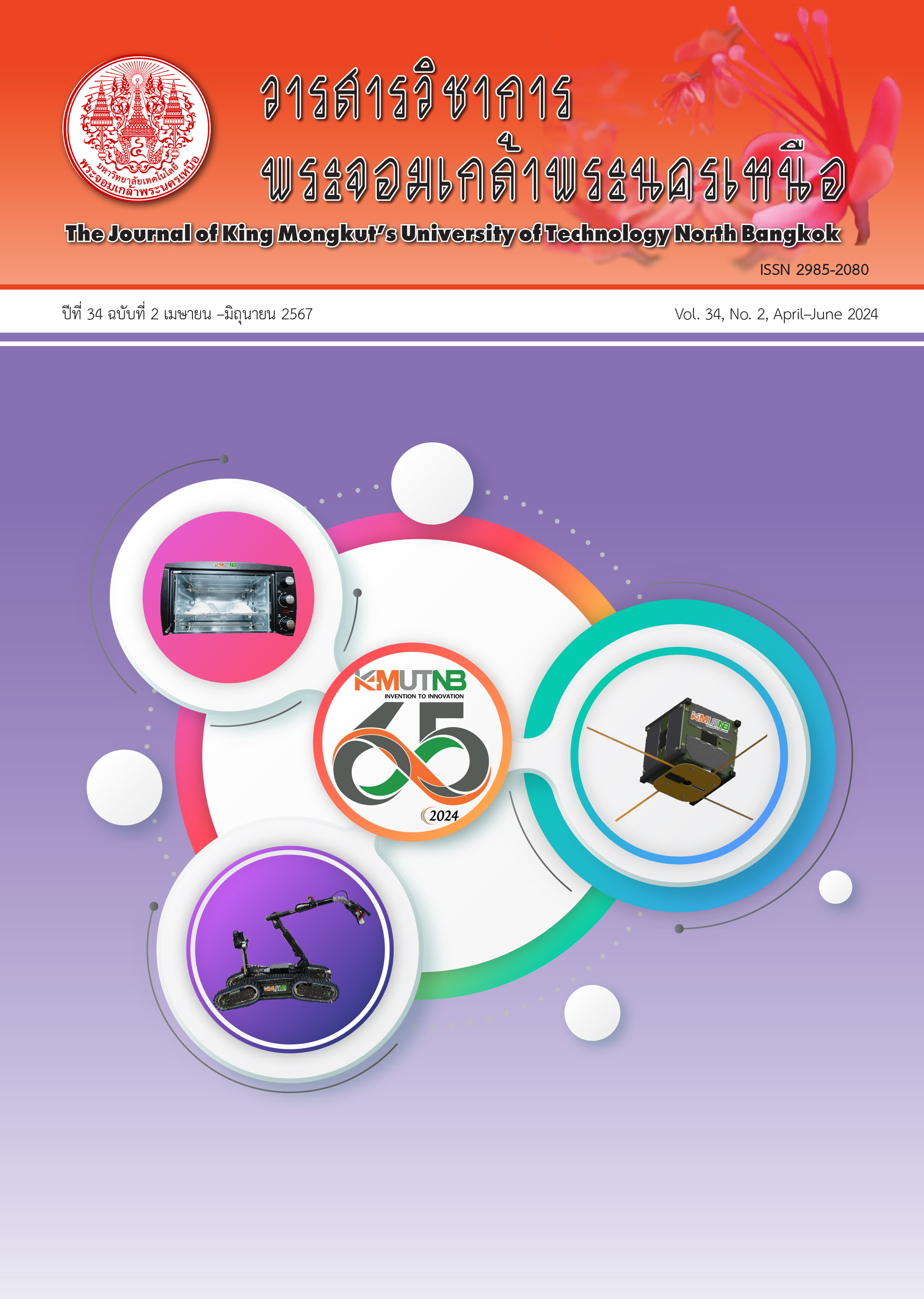Thai Handwriting Recognition Using Deep Learning
Main Article Content
Abstract
Working in most organizations often involves a large number of documents being created. One of the quickest and easiest documents to create is a handwritten document. However, these documents are generally not digitized files. Therefore, there are some disadvantages regarding the data retrieval system. Most research on handwritten recognition for the Thai language only tested 44 characters of the alphabet. However, the characters found on the documents contained different forms which consisted of 4 different levels. Therefore, it is difficult for a computer to segment each character correctly. This research proposed a Thai handwriting recognition system using deep learning by testing 77 handwritten images of provincial names in 70 different writing style samples. The data were divided into training and testing sets with the ratio of 90 : 10. The recognition model was developed by using the convolutional neural network with the 2-way LSTM recurrent neural network and CTC loss function. The accuracy of the results increased with post-processing by Word Beam Search for 1,000 epochs of training. The results showed that the highest accuracy was achieved when using the grayscale image as an input together with keeping the aspect ratio of the text. The accuracy was 94.99% in the word level and 95.92% in the character level. After the post-processing with the Word Beam Search, it was found that the highest accuracy in the word level was 98.14% (increased by 3.15%) and 98.40% (increased 2.48%) in the character level.
Article Details

This work is licensed under a Creative Commons Attribution-NonCommercial-NoDerivatives 4.0 International License.
The articles published are the opinion of the author only. The author is responsible for any legal consequences. That may arise from that article.
References
S. Bag and G. Harit, “A survey on optical character recognition for bangla and devanagari scripts,” Sadhana, pp. 133–168, 2013.
O. Phaophanat, “Handwritten Thai character recognition using deformable wavelet descriptor,” M.E. thesis, Department of Electrical Engineering, Faculty of Engineering, King Mongkut’s University of Technology Thonburi, Bangkok, 2001 (in Thai).
S. Iamsa-at and P. Horata, “Handwritten character recognition using histograms of oriented gradient features in deep learning of artificial neural network,” in Proceedings of 3rd International Conference on IT Convergence and Security, 2013, pp. 1–5.
R. Khadijah and A. Nurhadiyatna, “Deep learning for handwritten javanese character recognition,” in Proceedings of 1st International Conference on Informatics and Computational Sciences, 2017, pp. 59–64.
U. Pal, R. K. Roy, and F. Kimura, “Handwritten street name recognition for indian postal automation,” in Proceedings of International Conference on Document Analysis and Recognition, 2011, pp. 483–487.
J. L. Mitrpanont and Y. Imprasert, “Thai handwritten character recognition using heuristic rules hybrid with neural network,” in Proceedings of 8th International Joint Conference on Computer Science and Software Engineering, 2011, pp. 160–165.
Y. Lecun, L. Bottou, Y. Bengio, and P. Haffner, “Gradient-based learning applied to document recognition,” in Proceedings of the IEEE, vol. 86, no. 11, 1998, pp. 2278–2324.
S. Rathor, (2018, June 3). Simple RNN vs GRU vs LSTM: Difference lies in More Flexible control. [Online]. Available: https://medium. com/@saurabh.rathor092/simple-rnn-vs-gru-vslstm- difference-lies-in-more-flexible-control- 5f33e07b1e57
R. C. Staudemeyer and E. R. Morris, Understanding LSMT – a tutorial into Long Short-Term Memory Recurrent Neural Networks. Thuringia, Germany: Schmalkalden University of Applied Sciences, 2019.
B. Shi, X. Bai, and C. Yao, An End-to-End Trainable Neural Network for Image-based Sequence Recognition and Its Application to Science Text Recognition, New York, USA: Cornell University, 2015.
NECTEC. (2019, March 20). 68PersonsBmp. [Online]. Available: https://thailang.nectec. or.th/best/best2019-hand writtenrecognitiontrainingset
MathWorks. (2019, January 1). Rgb2Gray. [Online]. Available: https://www.mathworks. com/help/matlab/ ref/rgb2gray.htm
OpenCV. (2019, January 1). Image Thresholding. [Online]. Available: https://docs.opencv.org/ master/d7/ d4d/tutorial_py_thresholding.html
J. Canny, “A Computational Approach to Edge Detection,” in IEEE Transactions on Pattern Analysis and Machine Intelligence, Massachusetts, 1986, pp. 679–698.
NECTEC. (2019, March 20). WD200-1, WD200- 2, WD200-3 and WD200-4. [Online]. Available: https://thailang. nectec.or.th/best/best2019- handwrittenrecognition-trainingset
Z. Xu, X. Liu, and N. Ji, “Fog removal from color images using contrast limited adaptive histogram equalization,” in Proceeding of CISP2009, 2009, pp. 1–5.
K. Simonyan and A. Zisserman, Very Deep Convolutional Networks for Large-Scale Image Recognition. Oxford, England: University of Oxford, 2015.
T. Sangsuwan and S. Valuvanathoorn, “Thai handwritten character recognition using character line level grouping and keeping aspect ratio with convolutional neural network,” in Proceedings of NCCIT2019, 2019, pp. 383– 388 (in Thai).

